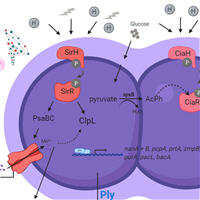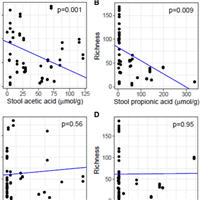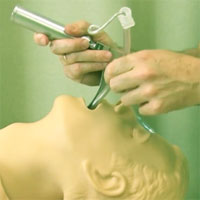Tag: sepsis

Oral Midodrine Feasibility in Early Sepsis
This study proved the feasibility of clinical trial to use oral midodrine in early sepsis. The study was not powered to detect statistically significant differences between the two groups, and therefore, the results from... read more

Association Between Premorbid Beta-Blocker Exposure and Sepsis Outcomes
This study suggests that β-blocker exposure prior to sepsis, especially to noncardioselective β blockers, may be associated with better outcome. The findings suggest prospective evaluation of β-blocker use in the management... read more

ACEP Task Force on Septic Shock Should Replace the Surviving Sepsis Campaign
The critical care community has long been plagued by a series of antiquated, overbearing guidelines created by the Surviving Sepsis Campaign (SSC). The campaign was originally sponsored by Eli Lilly and Edwards Life Sciences,... read more

Prior Exposure to Angiotensin II Receptor Blockers in Patients With Septic Shock to Individualize Mean Arterial Pressure Target?
Our results suggest that patients with septic shock and chronic hypertension treated with angiotensin II receptor blocker may benefit from a high mean arterial pressure target to reduce the risk of acute kidney injury occurrence. We... read more

Use of Biomarkers to Identify AKI to Help Detect Sepsis in Patients with Infection
Use of the urinary (tissue inhibitor of metalloproteinases-2) × (insulin-like growth factor binding protein 7) test could identify acute kidney injury in patients with infection, possibly helping to detect sepsis, nearly... read more

Virus-Induced Changes of the Respiratory Tract Environment Promote Secondary Infections
Secondary bacterial infections enhance the disease burden of influenza infections substantially. Streptococcus pneumoniae (the pneumococcus) plays a major role in the synergism between bacterial and viral pathogens, which... read more

The Surviving Sepsis Campaign: Fluid Resuscitation and Vasopressor Therapy Research Priorities in Adult Patients
In the second of a series of manuscripts subsequent to the original article, members with expertise in the subjects expound upon the three identified priorities related to fluid resuscitation and vasopressor therapies. This... read more

Decreased Intestinal Microbiome Diversity in Pediatric Sepsis
Intestinal dysbiosis was associated with altered short-chain fatty acid metabolites in children with sepsis, but these findings were not linked directly to mitochondrial or immunologic changes. More detailed mechanistic studies... read more

General Practitioners’ Views in Caring for Patients After Sepsis
General Practitioners provide continuity of care to patients surviving sepsis. Better communication at the ICU-GP interface and training in management of long-term complications of sepsis may be helpful to improve sepsis... read more

Galectin-3 in Septic AKI
This translational study demonstrates the importance of Gal-3 in the pathogenesis of sepsis acute kidney injury (S-AKI), and its potential utility as a therapeutic target. In 57 patients admitted to the intensive care... read more

Timing of Intubation in Patients With COVID-19
The timing of intubation in hypoxemic patients with COVID-19 has been hotly debated. Early in the pandemic, there was a push to intubate early, driven by the effort to reduce transmission of the virus. With time, high-flow... read more

Long-Term Survival Following Sepsis
The nearly 75% mortality four years after diagnosis indicates that changes are needed both in the acute treatment of patients with sepsis and in their multi-sector long-term care. The applicability of these findings may be... read more

Early Hemostatic Management of Disseminated Intravascular Coagulopathy
Inflammation and coagulation pathobiology play a significant role in the development of multiorgan failure occurring with sepsis. Inflammation induced by an infection can lead to endothelial injury, which subsequently... read more

Effect of Nurse-Led GDLPT on the Prognosis of Pneumonia in Sepsis Patients in the ICU
Nurse-led goal-directed lung physical therapy (GDLPT) improved the outcomes of pneumonia in sepsis patients, and was particularly associated with shortened mechanical ventilation duration and ICU stay, and reduced ICU mortality... read more








